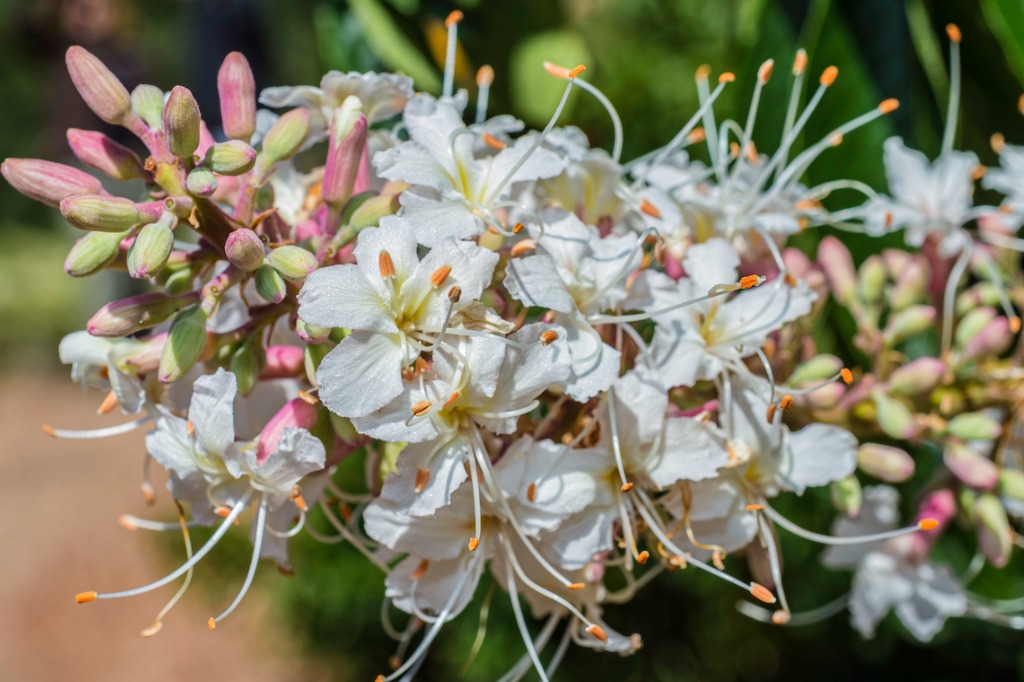California buckeye
(Aesculus californica)

Description
Aesculus californica, commonly known as the California buckeye or California horse-chestnut, is a species of buckeye native to California and southwestern Oregon. It is a large deciduous shrub or small tree, up to 4–12 m (13–39 ft) tall, with gray bark often coated with lichens and mosses. It typically is multi-trunked, with a crown as broad as it is high. Trees are long lived, with an estimated lifespan between 250–280 (300 maximum) years. The leaves are dark green, palmately compound with five (rarely seven) leaflets. Each leaflet is 6–17 cm (2.4–6.7 in) long, with a finely toothed margin and (particularly in spring) downy surfaces. The leaves are tender and prone to damage from both spring freezing or snow and summer heat and desiccation. The flowers are sweet-scented, white to pale pink, borne on erect panicles 15–20 cm (6–8 in) long and 5–8 cm (2–3 in) broad. The fruit is a fig-shaped capsule 5–8 cm (2–3 in) long, containing a large, round, orange-brown seed, measuring 2–7 cm (0.8–2.8 in). The seeds are poisonous and are the largest known of any temperate (non-tropical) plant species. A. californica has adapted to its native Mediterranean climate by growing during the wet late winter and spring months and entering dormancy in the dry summer months, though those growing in coastal regions tend to hold on to their leaves until mid-autumn.
Taxonomic tree:







